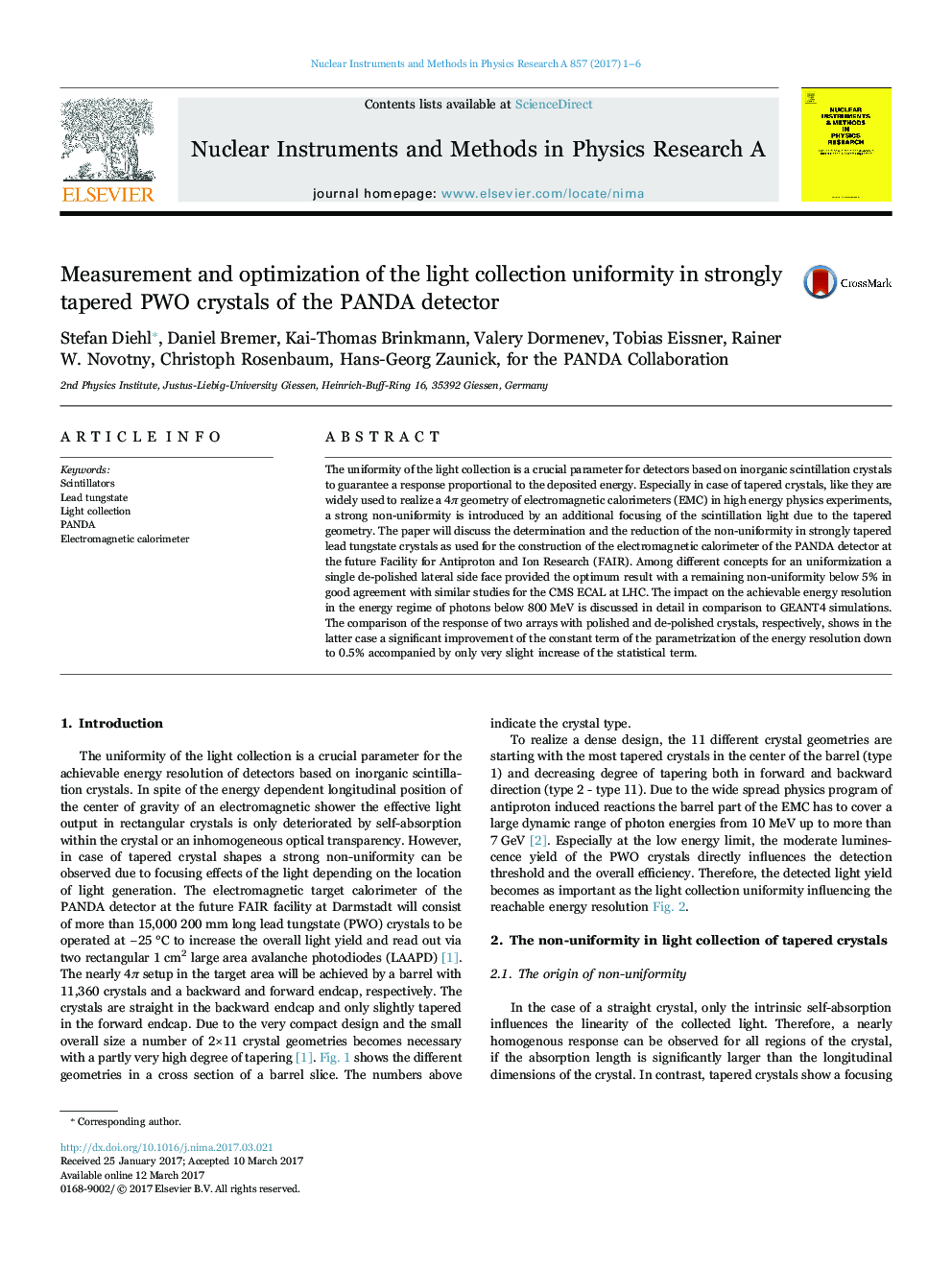| Article ID | Journal | Published Year | Pages | File Type |
|---|---|---|---|---|
| 5493362 | Nuclear Instruments and Methods in Physics Research Section A: Accelerators, Spectrometers, Detectors and Associated Equipment | 2017 | 6 Pages |
Abstract
The uniformity of the light collection is a crucial parameter for detectors based on inorganic scintillation crystals to guarantee a response proportional to the deposited energy. Especially in case of tapered crystals, like they are widely used to realize a 4Ï geometry of electromagnetic calorimeters (EMC) in high energy physics experiments, a strong non-uniformity is introduced by an additional focusing of the scintillation light due to the tapered geometry. The paper will discuss the determination and the reduction of the non-uniformity in strongly tapered lead tungstate crystals as used for the construction of the electromagnetic calorimeter of the PANDA detector at the future Facility for Antiproton and Ion Research (FAIR). Among different concepts for an uniformization a single de-polished lateral side face provided the optimum result with a remaining non-uniformity below 5% in good agreement with similar studies for the CMS ECAL at LHC. The impact on the achievable energy resolution in the energy regime of photons below 800Â MeV is discussed in detail in comparison to GEANT4 simulations. The comparison of the response of two arrays with polished and de-polished crystals, respectively, shows in the latter case a significant improvement of the constant term of the parametrization of the energy resolution down to 0.5% accompanied by only very slight increase of the statistical term.
Related Topics
Physical Sciences and Engineering
Physics and Astronomy
Instrumentation
Authors
Stefan Diehl, Daniel Bremer, Kai-Thomas Brinkmann, Valery Dormenev, Tobias Eissner, Rainer W. Novotny, Christoph Rosenbaum, Hans-Georg Zaunick, for the PANDA Collaboration for the PANDA Collaboration,
